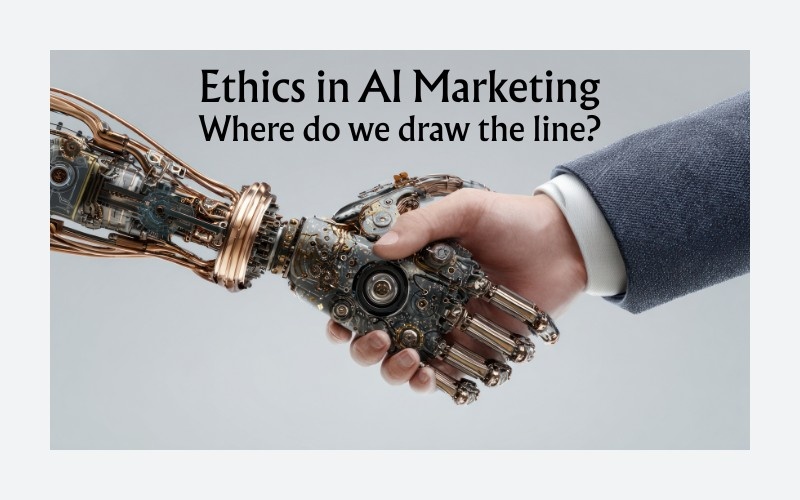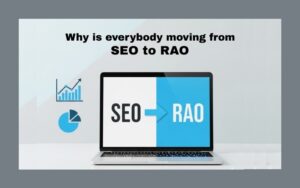Artificial intelligence has transformed the marketing world and enabled companies to have more opportunities to target and personalize, and automate than ever before. Considering AI, now brands will be able to identify consumer behavior, spend on the optimization of ads, and make hyper-personalized content which will greatly appeal to a person. Nevertheless, ethical questions regarding AI in marketing are emerging, and they should not be overlooked as AI gradually becomes a fundamental part of the marketing strategy. It is no longer a question of whether we are going to utilize AI in marketing, but how much is just too much?
The pace at which AI technology advances tends to confuse the ethical boundary in AI marketing. Among the main concerns is Tata’s privacy. Marketing through AI greatly depends on extensive data sets containing personal data, searching and shopping behavior, demographics, and so on, to the point of real-time location tracking. As much as consumers readily accept terms and conditions without necessarily understanding what kind of data is being managed and how it is going to be used, marketers and developers should realize that such an agreement might or might not be informed. Data usage must not only adhere to the laws but also be based on the principles of transparency, autonomy of the user, and accountability.
The other acute ethical challenge is the exploitation of customer behavior. AI systems can identify patterns and psychological cues that would help nudge consumers into a specific behavior, it viewing an advertisement, subscribing to a newsletter, or buying something. This could be very feasible from a business perspective, but when it entails demonstrating consumer weaknesses, it is entering the thorny waters. As an example, it can be morally dubious to appeal to the users who show the symptoms of stress or depression and offer them the products that can be used as an instant remedy. Marketers should judge the correctness of their methods in a moral context because there is a thin borderline between persuasion and manipulation.
Discrimination in AI is also a problem that is increasingly raising ethical issues. Learning with historical data, AI has the possibility of learning existing biases in society and may even enhance them existing biases. This has the potential to create distorted representations or ignore some groups in marketing. To give an example of such problems, a trained AI tool will simply recommend placing job advertisements for one gender over the other or predict that minority groups will be underrepresented in fashion campaigns. The moral duty in this case is to audit such models periodically, have various datasets, as well as establish thresholds of fairness and consideration. Neglecting bias not only affects the brand reputation, but it also contributes to inequality.
Furthermore, the application of deepfake and synthetic media in advertising gives a new area of ethical expansion. Brands can now produce highly realistic content after the creation of the tools capable of producing impressions of human voices and faces in high detail. This creates flexibility on the creativity end but also creates an avenue of deception. It is possible that the viewers cannot tell what endorsements or testimonials are genuine and which ones have been fabricated. Failing to disclose them, these strategies can devastate trust and undermine one of the major principles of ethical advertising, namely, authenticity. The ultimate problem of the misuse of deepfakes can lead to a regulatory crackdown and backlash from consumers that outweighs in the long term any profits gained through their marketing applications.
Especially vulnerable to AI-driven marketing are children and vulnerable populations. Much younger audiences might lack the intellectual capacity to maneuver around the targeted messages, and there can be the use of AI to generate underlying content that is directly programmed to attract the psychology of such audiences. In this case, an advertising game can be mentioned as an example that stimulates children to interact with in-app purchases, thus entertaining them and turning them into ambassadors of commerce. When targeting these demographics, ethical marketers will have to exercise more caution in the campaigns to make sure that the content is acceptable, respectful, and within a child protection framework.
Predictive analytics is also one of those spheres in which people should draw a line. On the one hand, the idea to predict the next purchase a user will make or the content they will watch to generate a better experience is good; on the other hand, the need to gauge the health status, budget funds, or personal disaster is too personal to be predicted and can feel uncomfortable or even manipulative. The ability to predict based on AI does not imply that it should. A firm should evaluate the social consequences of its predictive models and ascertain which insights will be acceptable to use. Crossing this line will not only put the user’s trust at risk but also may result in reputational and legal damage.

Moreover, with AI assuming an increasingly creative role, producing ad copy, choosing visuals, or writing social media posts, they ask the questions of authorship and accountability. What happens when an AI author creates a deceitful advertisement, or something offensive, is it the developer or marketer, or the machine that is to take the blame? It is not a simple answer, but ethical marketing requires important instructions on how to preview and vet the AI-generated content before its unveiling. Corporations should consider the employment of human-in-the-loop procedures in order to exercise control and make sure that the outputs of the AI models are efficient, consistent with the brand values, and do not counteract societal norms.
The AI marketing ethics must owe its principles to transparency. Consumers should also be aware of the fact that they are dealing with an AI system: it can be a chatbot on a website or a recommendation algorithm on a shopping platform. Proper labelling of AI communication assists in creating trust and keeps users unaware of what non-human actors are up to. As an example, algorithmic profiling should indicate to the audience that a product is suggested with the help of a computer program so that no illusion of natural suggestion would be created. The transparency will enable consumers to make better decisions and create a more respectful association between the brand and audience.
The AI marketing ethics also have to take into consideration environmental aspects. The creation of AI models is resource-intensive in terms of computing and, hence, uses up energy and, thus, releases carbon emissions. Since many marketers are adopting large-scale AI tools, they should include their sustainability in the ethical debate. Even a seemingly small choice of environmentally friendly technologies, reduction of data usage, and avoidance of redundant processing can be important. Ethical marketing nowadays should take into account human impact and even the environmental impact of the technologies implemented.
Also, clear regulatory frameworks are required. A good number of ethical concerns related to AI marketing are founded on the deficiency of quality governance. The governments and other leaders of the industry should collaborate in shaping the policies that will govern responsible AI applications and enhance innovation. Although there have been some national lawsimplementedn such as in the European Union, there is still coordination at the global level. Instead of waiting until this is reflected in the regulation, companies should actively work on the internal codes of conduct, start AI review boards, and systematically run impact audits.
It is also important to use education and awareness to define the boundary of AI marketing. Lots of marketers implement AI tools without deeply understanding how they operate in order to identify the outcomes of using them. Such a lack of knowledge may result in ethical violations. Training and equipping marketing teams with information on ethical AI application is a strategy that can be used to avoid the misuse and facilitate a responsible culture. Moreover, the businesses are also advised to educate their customers in terms of how the AI is utilized in the campaigns, with opportunities to receive feedback and decline participation in appropriate ways.
Lastly, it is necessary to underscore that ethical AI marketing needs not only to avoid the evil–it must create value in the long term, by instilling trust. Companies that emphasize ethics are held in higher regard by customers who have a higher purchase frequency, employees with higher morale, and better brand equity. Consumers would be more willing to pay attention to the brand when they are aware that the brand is conscious of their privacy, it is not manipulative, and supports fairness. Moral conduct, therefore, takes a competitive edge instead of a shrinking process.
To summarize, the boundary between AI marketing and excessive use of data has to be made when intrusion is replaced by manipulation, persuasion, and automation that compromise human values. Ethics does not have to be perceived as a restriction but rather a rule of thumb that helps to use AI in a responsible, fair, and transparent manner. Marketers can become such leaders, establishing the standards in which the performance is not the only priority, but also the health of consumers and society in general. The most successful brands will head into the AI-driven future, combining the force of AI and maintaining integrity at a higher level. The ethical component of AI marketing is no obstacle that has to be banished, but rather a duty that should be carried out.














